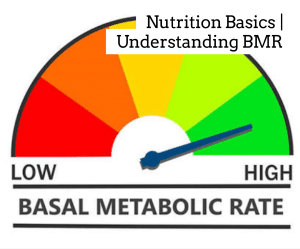
Understanding metabolism and resting metabolic rate can improve the results of any weight loss program.
When you think about doing activities that burn calories, you might think about running, jumping, and lifting weights. What you may not realize is that your body burns a significant amount of calories just performing basic functions, such as breathing and circulating blood. In fact, your body burns more calories performing these metabolic functions that it does during physical exercise. Doctors refer to this as resting metabolism.
Resting Metabolic Rate
Resting metabolic rate (RMR) measures how fast your body burns calories if you were to do nothing except lay there for 24 hours.
Metabolism is a group of chemical processes that keep an organism alive. These metabolic processes break down large food molecules for digestion, for example, and convert these molecules into proteins, fats, and other compounds your body can use.
In particular, metabolism is the
process of converting food to energy and using that energy to fuel the
basic processes of life. Metabolic rate is the speed at which the human
body does this.
Metabolic rates vary between people. This is
why it seems one person can eat anything he or she wants without gaining
weight and someone else seems to gain weight just by looking at food.
People with high metabolic rates burn a large quantity of calories while
they are at rest; people with low metabolic rates burn very few
calories while resting.
What Influences Metabolic Rate?
Several factors can influence resting metabolic rate. These factors include your age, weight, gender, and body composition.
A very large, muscular person has a higher resting metabolic rate than
does a small, lean person because it takes more energy to sustain the
larger body. Other factors can affect how many calories you burn,
including exercise and performing normal activities of daily living.
Even the amount of energy needed to chew, digest and store food, known
as the thermic effect of food (TEF), can affect your resting metabolic
rate.
Calculating Your Resting Metabolic Rate
Before you can change your RMR, you must first determine what your resting metabolic rate is. There are two main ways to measure your RMR: indirect calorimetry and using an equation. Indirect calorimetry is a medical test that measures the gases you exhale to calculate the amount and type of fuel your body uses.
Using an equation is not as accurate and takes some math skills, but is something anyone can calculate. The most common RMR equation is the Harris-Benedict equation, which takes a person’s gender, height, weight, and age into account. To use the Harris-Benedict equation, simply enter your information into the following equations – be sure to enter your weight in kilograms, height in centimeters, and your age in years.
Male: (88.4 + 13.4 x weight) + (4.8 x height) – (5.68 x age)
Female: (447.6 + 9.25 x weight) + (3.10 x height) – (4.33 x age)
You can also use an online calculator to determine your RMR.
Changing Your Resting Metabolic Rate as Part of a Weight Loss Program
Increasing your resting metabolic rate helps you lose weight by burning more calories while at rest. Decreasing your RMR slows your weight loss. It is possible to change your RMR as part of a weight loss program, but it is not easy. Here are a few tips for boosting your RMR for effective weight loss.
If you are trying to lose body fat by increasing your RMR, the worst thing you can do is stop eating. The American Council on Exercise (ACE) says that fasting can actually drop your metabolic rate, which means starvation slows down your weight loss. Consuming a very low calorie diet and exercising can support healthy RMR levels. Going on a very low calorie diet without exercise, however, can actually reduce RMR and cause the body to cannibalize muscle tissue as a source of protein.
Build muscle mass! Men have higher resting metabolism rates than women because they have bigger organs and muscles to fuel. Big muscles burn more calories – even at rest – than smaller muscles.
Exercise! Exercising is an integral part of every weight loss program because physical activity burns calories and helps build muscle mass. Some exercises impart a greater effect on resting metabolic rate than do other exercises. High-intensity interval training (HIIT) can boost RMR, for example. HIIT features bursts of intense exercise followed by short rest periods.
Consult with a weight loss professional! Talk to your weight loss doctor for more information on boosting your resting metabolism as part of a weight loss program. The more you know about weight loss and metabolism, the more weight you can lose in the shortest time possible.
Call Doctors Weight Control today to schedule your appointment!

